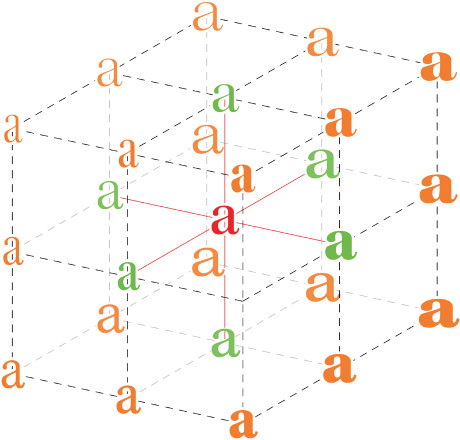Introducing OpenType Variable Fonts by John Hudson.
From the post:
Version 1.8 of the OpenType font format specification introduces an extensive new technology, affecting almost every area of the format. An OpenType variable font is one in which the equivalent of multiple individual fonts can be compactly packaged within a single font file. This is done by defining variations within the font, which constitute a single- or multi-axis design space within which many font instances can be interpolated. A variable font is a single font file that behaves like multiple fonts.
There are numerous benefits to this technology. A variable font is a single binary with greatly-reduced comparable file size and, hence, smaller disc footprint and webfont bandwidth. This means more efficient packaging of embedded fonts, and faster delivery and loading of webfonts. The potential for dynamic selection of custom instances within the variations design space — or design-variations space, to use its technical name — opens exciting prospects for fine tuning the typographic palette, and for new kinds of responsive typography that can adapt to best present dynamic content to a reader’s device, screen orientation, or even reading distance.
The technology behind variable fonts is officially called OpenType Font Variations. It has been jointly developed by Microsoft, Google, Apple, and Adobe, in an unprecedented collaborative effort also involving technical experts from font foundries and font tool developers. In addition to specifying the font format additions and revisions, the working group has also committed to the goal of interoperable implementation, defining expected behaviours and test suites for software displaying variable fonts. This should be welcome news to font developers and users, who have often struggled with incompatible implementations of earlier aspects of OpenType that were left to the interpretation of individual software companies.
OpenType Font Variations builds on the model established in Apple’s TrueType GX variations in the mid-1990s, but has fully integrated that model into all aspects of the OpenType format, including OpenType Layout, and is available to both TrueType and Compact Font Format (CFF) flavours of OpenType. This has meant not only the addition of numerous tables to the format, but also revision of many existing tables; these changes are summarised in an appendix to this article, which is intended as an introduction and technological summary, primarily for font makers and font tool developers. The full technical specification for OpenType Font Variations is incorporated into the OpenType specification version 1.8.
…
John Hudson developed the remarkable SBL BibLit, SBL Greek and SBL Hebrew fonts for biblical studies.
An illustration from John’s post:
Figure 1. Normalised design space of a 3-axis variable font.
[Typeface: Kepler, an Adobe Original designed by Robert Slimbach.]
Looking forward to the SBL transitioning its biblical studies font set to this new font technology.
